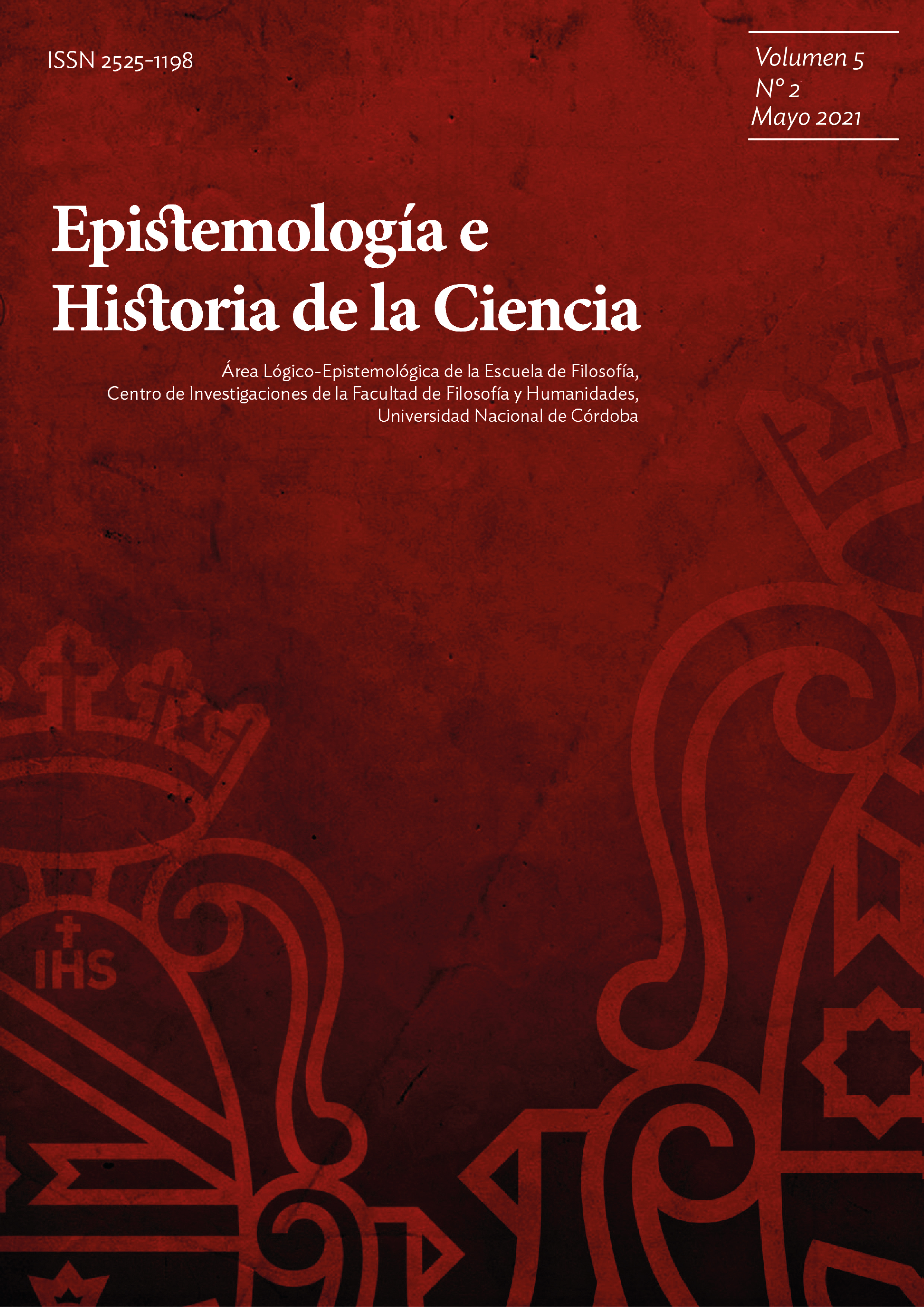Distinction between Form and Biological Function
Consequences for the Radical Contingency Thesis
DOI:
https://doi.org/10.61377/ehc.32434Keywords:
contingency, evolution, natural selection, biological functionsAbstract
The radical contingency thesis (RCT) claims that evolved biological traits are contingent in the sense that are unpredictable, because their evolution depends on the happenings of previous evolutive states, which, despite ending in some specific biological forms, could have derived in very different ones. This paper offers a new version about evolutive contingency, understood as the sharp distinction between function and biological form. There are enough elements for supporting the idea that, given the way natural selection works, in which the environment plays a key role, there is a clear distinction between biological form and function. This view implies contingency regarding the strategies that natural selection uses for accomplishing the varied required functions, but convergence in the general functions that traits are intended to fulfill. This view sheds light on the very nature of biological contingency in the sense that it shows that contingency is impossible if some general and basic functional effects are posited for every living organism.
References
Allen, C. & Bekoff M. (1995). Biological function, adaptation, and natural design. Philosophy of Science, 62(4), pp. 609-622. https://www.jstor.org/stable/188555
Bartlett, S., & Wong, M. (2020). Defining lyfe in the universe: From three privileged functions to four pillars. Life, 10(4), 42. http://doi.org/10.3390/life10040042
Beatty, J. (2006). Replaying life's tape. The Journal of Philosophy, 103(7), 336-362. http://www.jstor.org/stable/20619950
Caponi, G. (2010). Análisis funcionales y explicaciones seleccionales en biología. Una crítica de la concepción etiológica del concepto de función. Ideas y Valores, 59(143), 51-72. https://revistas.unal.edu.co/index.php/idval/article/view/36654
Cummins, R. (1975). Functional analysis. The Journal of Philosophy, 72(20), 741-765. https://doi.org/10.2307/2024640
Darwin, C. R. (1872). The origin of species by means of natural selection, or the preservation of favoured races in the struggle for life (6th ed.). Londres: John Murray. http://darwin-online.org.uk/content/frameset?itemID=F391&viewtype=text&pageseq=1
Emerson, S. B. (2001). A macroevolutionary study of historical contingency in the fanged frogs of Southeast Asia. Biological Journal of the Linnean Society, 73(1), 139–151 https://doi.org/10.1111/j.1095-8312.2001.tb01352.x
Gould, S. J. (1989). Wonderful life: The Burgess Shale and the nature of history. New York: W. W Norton.
Gould S. J., & Vrba, E. S. (1982). Exaptation –a missing term in the science of form. Paleobiology, 8(1), 4-15. http://doi.org/10.1017/S0094837300004310
Griffiths, P. (1992). Adaptive explanation and the concept of a vestige. En P. Griffiths (Ed.), Trees of life: Essays in philosophy of biology (pp. 111-131). Londres: Springer.
Keijzer, F. A. (2017). Evolutionary convergence and biologically embodied cognition. Interface Focus, 7(3), 20160123. http://dx.doi.org/10.1098/rsfs.2016.0123
Losos, J. B., Jackman, T. R., Larson, A., de Queiroz, K., & Rodríguez-Schettino, L. (1998). Contingency and determinism in replicated adaptive radiations of island lizards. Science, 279(5359), 2115-2118. http://doi.org/10.1126/science.279.5359.2115
Neander, K. (1988) What does natural selection explain? Correction to Sober. Philosophy of Science, 55(3), 422-426. https://www.jstor.org/stable/187658
Neander, K. (1995). Pruning the tree of life, The British Journal for the Philosophy of Science, 46(1), 59- 80
Powell, R., & Mariscal, C. (2015). Convergent evolution as natural experiment: The tape of life reconsidered. Interface Focus, 5(6), 20150040. http://dx.doi.org/10.1098/rsfs.2015.0040
Rosenblum, E., Parent, C., & Brandt, E. (2014). The molecular basis of phenotypic convergence. Annual Review of Ecology, Evolution, and Systematics, 45, 203-226. https://doi.org/10.1146/annurev-ecolsys-120213-091851
Starr, T. N., Picton, L. K., & Thornton, J. W. (2017). Alternative evolutionary histories in the sequence space of an ancient protein. Nature 549, 409–413. https://doi.org/10.1038/nature23902
Sober, E. (1984). The nature of selection: Evolutionary theory in philosophical focus. Chicago: The University of Chicago Press.
Sober, E. (2000). Philosophy of biology (2nd Ed.). Routledge.
Solé, R., & Goodwin, B. (2000). Signs of life: How complexity pervades biology. New York: Basic Books.
Travisano, M., Vasi, F., & Lenski, R. E. (1995). Long-Term experimental evolution in Escherichia coli. III. Variation among the replicate populations in correlated responses to novel environments. Evolution, 49(1), 189-200. http://doi.org/10.1111/j.1558-5646.1995.tb05970.x
Yedid, G., Ofria, C. A., & Lenski, R. E. (2008). Historical and contingent factors affect re-evolution of a complex feature lost during mass extinction in communities of digital organisms. Journal of Evolutionary Bibliology, 21(5), 1335–1357. http://doi.org/10.1111/j.1420-9101.2008.01564.x
Wong, T. Y. W. (2019). The evolutionary contingency thesis and evolutionary idiosyncrasies. Biology & Philosophy, 34(22). https://doi.org/10.1007/s10539-019-9684-0
Wright, L. (1973). Functions. The Philosophical Review, 82(2), 139-68. https://doi.org/10.2307/2183766.
Downloads
Published
Issue
Section
License
Copyright (c) 2021 Epistemología e Historia de la Ciencia

This work is licensed under a Creative Commons Attribution-NonCommercial-NoDerivatives 4.0 International License.
En todos los lugares donde aplique, esta obra está bajo una licencia Creative Commons Reconocimiento-NoComercial-SinObrasDerivadas 4.0 .
- Los autores/as conservarán sus derechos de autor y garantizarán a la revista el derecho de primera publicación de su obra, el cual estará simultáneamente sujeto a la Licencia de reconocimiento de Creative Commons que permite a terceros compartir la obra, siempre que se indique su autor y su primera publicación en esta revista.
- Los autores/as podrán adoptar otros acuerdos de licencia no exclusiva de distribución de la versión de la obra publicada (p. ej.: depositarla en un archivo digital institucional o publicarla en un volumen monográfico), siempre que se indique la publicación inicial en esta revista.
- Se permite y recomienda a los autores/as difundir su obra a través de Internet (p. ej.: en archivos digitales institucionales o en su página web) antes y durante el proceso de envío.
- Las licencias de las imágenes de terceros incluidas en los artículos pueden estar sujetas a otros términos; los autores/as son responsables de asegurar la veracidad de su origen, la información de la fuente original provista y su permiso de reproducción en esta publicación, que puede ser exclusivo.







